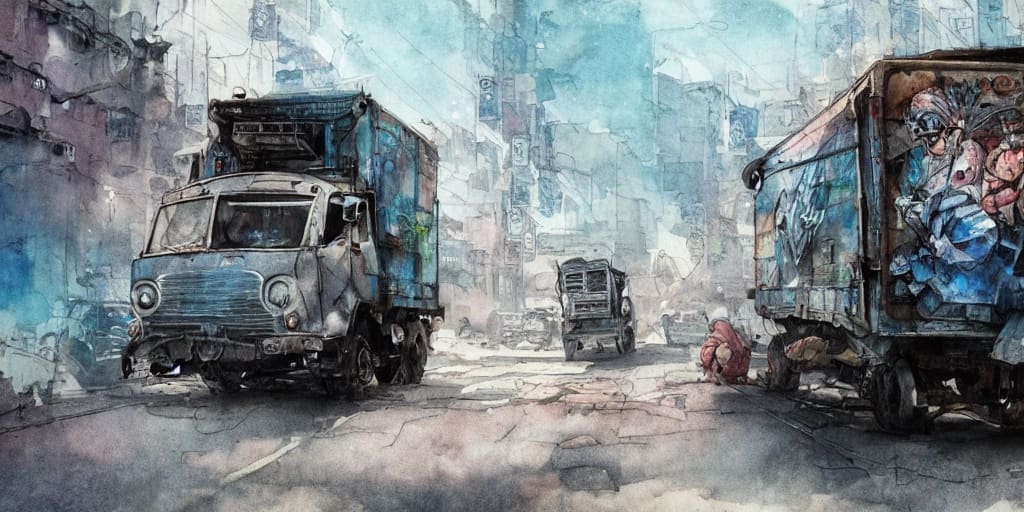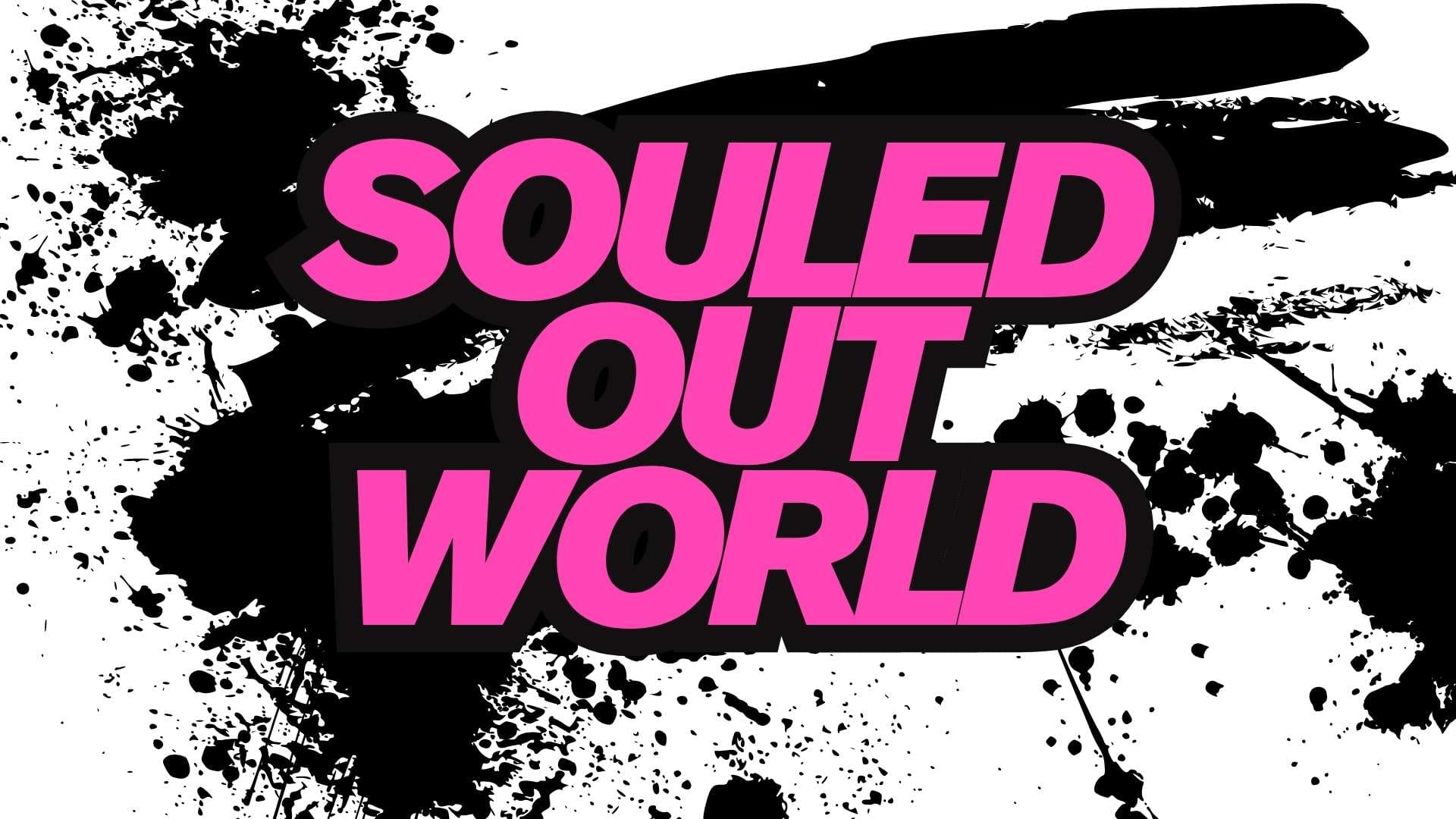Blueprint to a Transformed World
In a world grappling with intricate challenges, the imperative to redirect our trajectory towards a brighter future resonates with unprecedented urgency. The cacophony of issues, from climate change’s ominous shadow to the persistent specter of social inequality, demands not just individual reflection but collective action on a global scale. The notion of changing the world for the better is not a mere utopian aspiration; it is a compelling call to craft a comprehensive blueprint that navigates through the complexities of our contemporary existence.

Table of Contents
Blueprint to a Transformed World Continued
Following on from Part 1 of our two-part article we leap back into the intricate web of principles and strategies that form the backbone of a roadmap toward positive change. From empowering grassroots movements and embracing technology for good to advocating for sustainable consumption, nurturing empathy, and prioritizing equality, each facet is a crucial building block in the construction of a brighter tomorrow. Through the lens of real-world examples and experiences, we unravel the interconnected nature of these principles, illuminating a path that beckons us to reimagine our collective destiny.
As we embark on this exploration, we seek not only to elucidate the importance of each principle individually but to weave a narrative that underscores their symbiotic relationship. It is an exploration that extends beyond theoretical frameworks, drawing inspiration from the tangible successes and lessons learned in various corners of the globe. The journey ahead is not devoid of challenges, but within these challenges lie opportunities to forge a future that is equitable, sustainable, and guided by compassion.
Join us as we navigate through the realms of grassroots resilience, technological innovation, sustainable practices, and the profound impact of empathy. Through these narratives, we strive to illuminate not just the daunting hurdles we face but the myriad possibilities that arise when communities, nations, and individuals align in a shared commitment to change the world for the better. This article is an invitation to engage with the transformative potential within our grasp and to envision a world where the collective pursuit of positive change becomes our shared destiny.

Empowering Grassroots Movements
Real change often germinates at the grassroots level. Civil society organizations and local leaders have the pulse of their communities, making them instrumental in addressing specific challenges. The success of the Chipko movement in India, where villagers embraced tree-hugging to protest deforestation, exemplifies the power of grassroots initiatives in environmental conservation.
Supporting and amplifying the voices of such movements is crucial. Funding, resources, and legislative support can empower local initiatives, allowing them to grow and influence larger policy changes. Recognizing the agency of communities in shaping their destinies ensures that solutions are contextually relevant and sustainable.
The Landless Workers’ Movement (MST) in Brazil: The Landless Workers’ Movement (Movimento dos Trabalhadores Rurais Sem Terra, MST) in Brazil is one of the largest social movements advocating for land reform and rural workers’ rights. Founded in 1984, the MST operates as a collective effort to address issues of land inequality and social justice. The movement engages in occupations of unused land, seeking to redistribute it for agricultural purposes.
The MST focuses on empowering marginalized rural communities, providing education and training programs, and advocating for policies that support land redistribution. Through occupations, protests, and negotiations, the movement has successfully settled thousands of families on previously unproductive land. Additionally, the MST emphasizes sustainable and agroecological farming practices, contributing to both social justice and environmental sustainability.
By empowering rural communities to assert their rights and promoting sustainable agriculture, the Landless Workers’ Movement demonstrates the transformative impact grassroots movements can have on both local and national levels.

The Umbrella Movement in Hong Kong (2014): The Umbrella Movement, also known as Occupy Central, emerged in Hong Kong in 2014 as a series of protests advocating for democratic reforms and autonomy from mainland China. Triggered by Beijing’s decision to tightly control the selection of candidates for the 2017 Hong Kong Chief Executive election, the movement drew millions of citizens, particularly young people, to the streets.
The Umbrella Movement utilized nonviolent civil disobedience, with protesters occupying key areas of Hong Kong, including the central business district. The movement called for genuine universal suffrage and greater political freedoms, asserting the autonomy promised to Hong Kong under the “One Country, Two Systems” principle.
While the Umbrella Movement did not immediately achieve its political goals, it had a lasting impact on Hong Kong’s political landscape, inspiring subsequent waves of protests and solidifying a sense of identity and resistance against perceived encroachments on the city’s autonomy. The movement exemplifies how grassroots activism can shape political discourse and empower citizens to demand accountability and democratic rights.
These examples highlight the diverse ways in which grassroots movements, whether focused on land rights or political autonomy, can be powerful agents of change, influencing policies, promoting social justice, and fostering a sense of agency among marginalized communities.

Embracing Technology for Good
Technology, when wielded responsibly, can be a potent force for positive change. Digital innovations have the capacity to address complex issues, from healthcare to education. The Gates Foundation’s efforts in global health, leveraging technology for disease prevention and healthcare access, demonstrate the potential impact of strategic tech initiatives.
Promoting digital literacy and ensuring equitable access to technology are imperative steps. Moreover, ethical considerations must guide technological advancements to prevent unintended consequences. Harnessing technology for sustainable solutions, whether through precision agriculture or telemedicine, can significantly contribute to a better future.
M-Pesa Mobile Payment System in Kenya: M-Pesa, which stands for “Mobile Money” in Swahili, is a transformative mobile payment system that originated in Kenya. Launched in 2007 by Safaricom, Kenya’s leading mobile network operator, M-Pesa allows users to transfer money, make payments, and access various financial services using their mobile phones. This technology has had a profound impact on financial inclusion, particularly in areas with limited access to traditional banking services.
In Kenya and other parts of Africa, M-Pesa has empowered individuals in rural and underserved communities, providing them with a secure and convenient way to manage their finances. The system has facilitated economic activities, allowed for easier access to credit, and contributed to poverty reduction. M-Pesa’s success has inspired similar mobile money initiatives in other regions, illustrating how technology can bridge financial gaps and improve the lives of millions.

Estonia’s E-Government and Digital Society: Estonia, a small Baltic nation, has gained international recognition for its innovative approach to e-governance and the creation of a digital society. The Estonian government has embraced technology to streamline public services, enhance efficiency, and empower citizens. The country’s e-residency program, launched in 2014, allows individuals from anywhere in the world to establish and manage a business online, contributing to global economic inclusivity.
Estonia’s digital ID system enables secure and seamless access to a wide range of government services, from voting and signing legal documents to managing healthcare records. The use of blockchain technology ensures the integrity and security of these digital services. This approach has not only improved the efficiency of government operations but has also fostered a sense of trust and transparency in the relationship between citizens and their government.
Estonia’s success in building a digital society demonstrates how embracing technology for good can lead to more accessible, efficient, and citizen-centric governance models, setting an example for other nations seeking to leverage technology for societal advancement.
These examples illustrate how technology, when harnessed responsibly and with a focus on societal benefits, can bring about transformative changes in various aspects of daily life, from financial inclusion to governance.

Sustainable Consumption and Conservation
The current patterns of consumption are placing an unsustainable burden on the planet. Shifting towards sustainable practices involves not only individual choices but also systemic changes. Bhutan’s commitment to carbon neutrality and conservation, as seen in the Bhutan for Life initiative, presents a holistic model. By placing a value on biodiversity and prioritizing conservation in policymaking, Bhutan sets an example for a balanced approach to development.
Individuals, too, play a crucial role. From supporting eco-friendly businesses to reducing personal carbon footprints, conscious consumer choices can drive demand for sustainable practices. Governments, in turn, can incentivize and regulate industries toward environmentally friendly practices.
Japan’s Zero Waste Town: Kamikatsu: Kamikatsu, a town in Japan, has gained international recognition for its ambitious zero-waste goals. In 2003, Kamikatsu set a target to become a zero-waste community by 2020, aiming to recycle or compost all of its waste. The residents of Kamikatsu actively participate in waste separation and recycling practices, sorting their waste into 45 different categories.
The town has implemented a comprehensive waste management system, including recycling stations where residents can deposit items such as paper, glass, and even items like toothbrushes and small appliances. Kamikatsu’s commitment to zero waste extends beyond recycling; the town encourages practices like upcycling and composting. While achieving a completely zero-waste society is an ongoing process, Kamikatsu serves as an inspiring example of how a community can actively work towards minimizing its environmental impact.

Colombia’s Sustainable Coffee Production: Colombia, renowned for its coffee, has been making strides in sustainable coffee production. In the region of Huila, coffee farmers have embraced environmentally friendly and socially responsible practices. The Rainforest Alliance, a global sustainability certification organization, has partnered with Colombian coffee producers to promote sustainable agriculture.
Farmers in Huila focus on agroforestry practices, which involve planting trees alongside coffee crops to enhance biodiversity and provide shade. These practices contribute to soil health, reduce the need for synthetic fertilizers, and promote a more resilient ecosystem. Additionally, sustainable coffee production initiatives in Colombia emphasize fair labor practices, ensuring that coffee farmers receive fair wages for their work.
The shift towards sustainable coffee production not only benefits the environment but also supports the livelihoods of local farmers. It demonstrates how agricultural practices can be adapted to prioritize both ecological conservation and the well-being of communities.
These examples illustrate the diverse ways in which countries are actively pursuing sustainable consumption and conservation practices, showcasing the adaptability and innovation needed to address environmental challenges on a global scale.

Nurturing Empathy and Compassion
Building a better world necessitates a cultural shift towards empathy and compassion. Acts of kindness, whether on an individual or societal level, create a ripple effect that can shape a more compassionate world. The “Kindness Movement” in Singapore, encouraging small acts of kindness in daily life, serves as an inspiring example.
Educational programs and media campaigns can play a pivotal role in nurturing empathy. Incorporating empathy-building curricula in schools and promoting positive narratives in the media contribute to fostering a culture where understanding and compassion are valued.
The Charter for Compassion – Global Movement: The Charter for Compassion is a global initiative that transcends borders and cultural boundaries with the goal of fostering compassion in individual and collective behavior. It was unveiled in 2009 and is based on the idea that compassion is a core value in all major religious, ethical, and spiritual traditions.
The Charter encourages individuals, communities, and institutions to embrace the principle of treating others as one wishes to be treated. It has gained support from diverse communities and leaders worldwide, promoting empathy as a driving force for positive change. The Charter for Compassion serves as a unifying platform, inspiring individuals and organizations to incorporate compassionate values into their daily lives and decision-making processes.
Through various programs, educational initiatives, and community projects, the Charter for Compassion demonstrates the transformative power of fostering empathy and compassion on a global scale.

The Kindness Movement in Singapore: Singapore has embraced the power of kindness through its Kindness Movement, a national initiative aimed at creating a gracious and compassionate society. Launched in 1997, the movement encourages individuals to perform acts of kindness in their daily lives, fostering a culture of empathy and consideration.
The Kindness Movement has implemented various campaigns and activities, including “Graciousness on the Go,” which promotes courteous behavior in public spaces, and “Kindness Day SG,” an annual celebration that encourages acts of kindness across the nation. The movement actively engages schools, businesses, and communities, emphasizing the importance of empathy in building a harmonious and caring society.
Singapore’s Kindness Movement showcases how a nation can actively nurture empathy and compassion, influencing social norms and encouraging positive interactions among its citizens.
These examples highlight the importance of intentional efforts to nurture empathy and compassion, whether through global movements or national initiatives, in creating a more compassionate and interconnected world.

Forging a Compassionate and Sustainable Tomorrow
In contemplating the multifaceted challenges that shape our world, the imperative to change our trajectory toward a brighter future becomes not just a choice but a collective responsibility. As explored in this two-part article, the blueprint for positive change emerges from diverse realms.
The transformative potential embedded in the stories of movements like MST in Brazil and the Umbrella Movement in Hong Kong echoes the profound impact grassroots initiatives can have on society. Their resilience, dedication, and ability to shape narratives and policies underscore the crucial role that communities play in influencing positive change.
The examples of M-Pesa in Kenya and Estonia’s digital governance showcase how responsible technological innovation can uplift communities, bridge gaps, and foster inclusivity. As we navigate the digital age, ethical considerations must guide our technological endeavors, ensuring that progress is not only efficient but also equitable.
Japan’s zero-waste town Kamikatsu, and Colombia’s sustainable coffee production exemplify a harmonious relationship between development and environmental preservation. By valuing biodiversity, adopting sustainable practices, and making conscious consumer choices, nations and individuals alike contribute to a more balanced and sustainable future.
The Charter for Compassion and Singapore’s Kindness Movement underscore the transformative power of fostering empathy on a global and national scale, respectively. These initiatives remind us that building a better world starts with cultivating understanding, kindness, and compassion in our interactions, institutions, and educational systems.
As we weave these threads of positive change together, hope and possibility unfolds. Each principle and strategy discussed contributes to the overarching narrative of a future defined by equality, sustainability, justice, and compassion. It is a future where the collective actions of individuals, communities, and nations align in a shared commitment to leave a positive mark on the world.
In our pursuit of a brighter future, the essence lies not only in adopting these principles individually but in recognizing their interconnectedness. A holistic approach that combines grassroots empowerment, technological innovation, sustainable practices, and a culture of empathy is the key to unlocking the transformative potential within our grasp.
The call to change the world for the better is not an abstract ideal; it is a call to action, a call to reimagine our collective destiny. The blueprint provided here is not prescriptive but rather an invitation – an invitation to engage, collaborate, innovate, and, above all, to believe in the possibility of a future where positive change is not only conceivable but achievable.
As we embark on this collective journey, let us carry forward the lessons from the diverse examples shared, recognizing that the power to shape a brighter tomorrow lies within each of us. In the words of Margaret Mead, “Never doubt that a small group of thoughtful, committed citizens can change the world; indeed, it’s the only thing that ever has.” Together, let us be the architects of a world that stands as a testament to the transformative potential of human compassion, innovation, and resilience.
















































